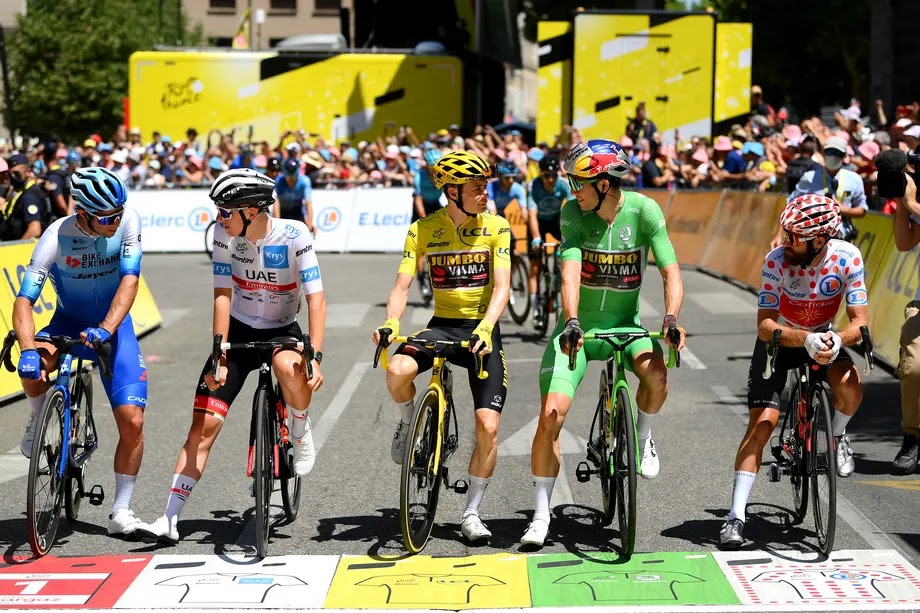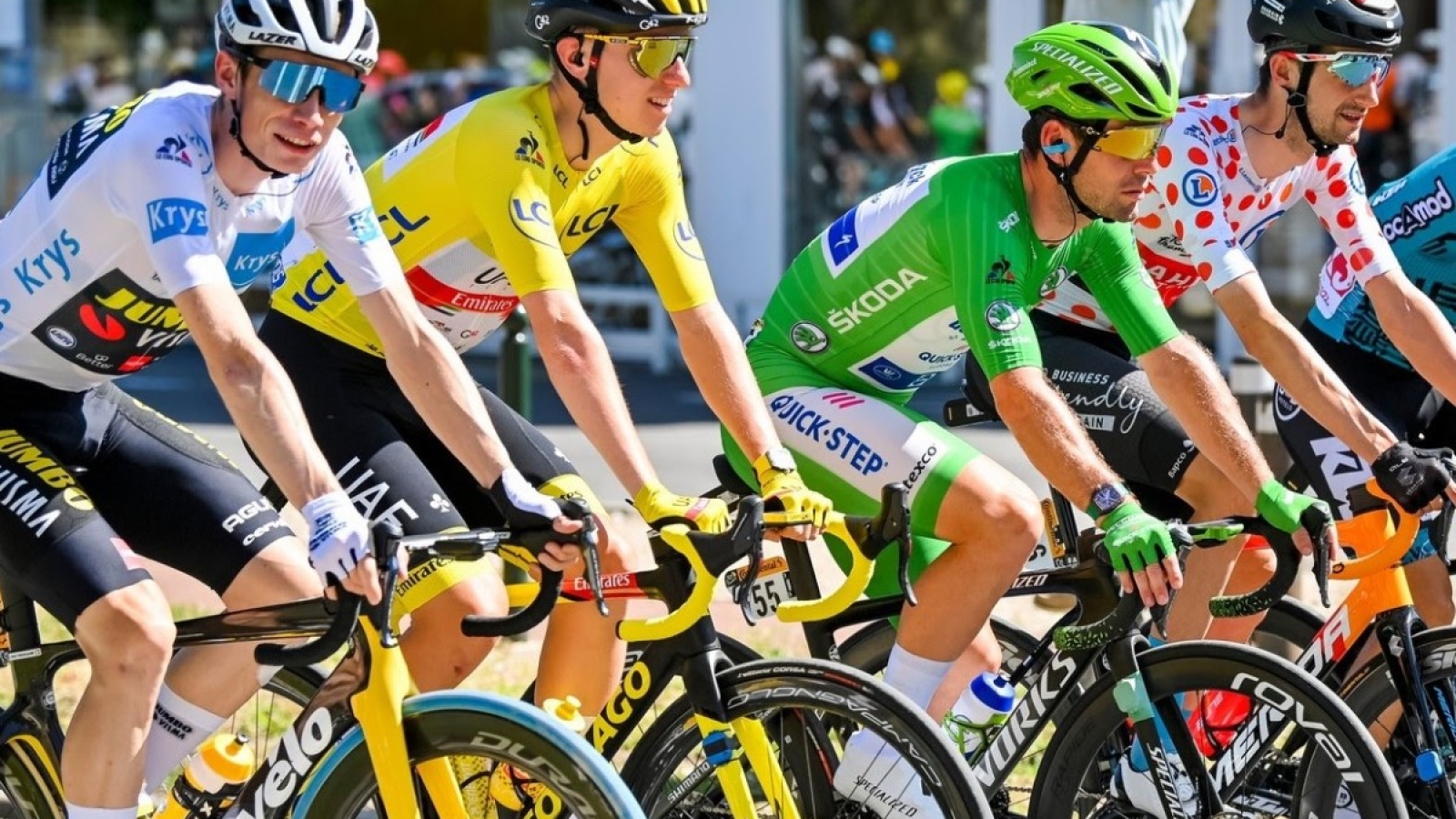Surely, when watching the Tour de France you have noticed that some cyclists wear different colored jerseys, namely white, green, yellow or white with red polka dots. Did you know that these have a meaning? That’s right, the colors of the Tour de France jerseys are used, above all, to create a distinction. But what exactly does each one tell us? Below, we talk about the colors, jersey, Tour de France and their meaning. Read on!
Tour de France jersey colors: What do they mean?

As we indicated in the introduction, the color of the jersey in the Tour de France serves to create a distinction, specifically of the different leaders during each of the stages of this competition that usually lasts three weeks. The rankings of the Tour de France work by points and based on these points it is determined who should hold one or the other of the colors of the Tour de France jersey. This classification system has been in operation since 1953. The results are calculated by adding the points obtained in each stage, but also by subtracting the penalty points. The points awarded to each rider also vary depending on the place where they cross the finish line or the intermediate sprint line, as well as the cyclists with the best times and the individual time trials.
Specifically, since 2019 the palmarès has been expanding with the different cycling champions after scoring the most points in the flat stage, the mid-mountain stage, the high mountain stage, the time trial and the intermediate sprint. Throughout these the colored Tour de France jerseys (or Tour de France jerseys) change between the different cyclists, depending on the points they score, but what does each color of the Tour de France jersey mean? Let’s see, below.
Why is the Tour jersey yellow?
When we talk about the Tour de France yellow jersey, we are referring to the jersey that is assigned to the first individual time finisher in the overall standings. That is to say, it is the most prestigious jersey that exists in the competition. It was created in 1919 in reference to the yellow paper of the newspaper L’Auto, owned by the creator of the Tour Henri Desgrange. In short, it is the garment worn by the cyclist who leads the Tour de France and allows him to be identified in the stages in which he wears it as the winner. To do so, he must have the lowest accumulated time in each stage -after adding and subtracting the corresponding time bonuses or penalties-. Generally the wearer of this jersey in the different stages (or in most of them) is usually the one who ends up proclaimed as the final winner of the competition, however, there are very specific cases in which a cyclist has come to be proclaimed as such without having worn the yellow jersey of the Tour de France at any time. The only examples are Jean Robic (1947) and Jan Janssen (1968).
What does the green jersey mean in the Tour de France?
In answering the question of what is the green jersey of the Tour de France we find a jersey that was created in 1953 to commemorate the 50th anniversary of the first Tour de France. In fact, it already existed in the past, but it had an opposite meaning to the current one, since in the early years it was given as a punishment to cyclists who received penalty points for not finishing in the first places. Nowadays the green jersey of the Tour de France (and since the date indicated) is awarded to the first finisher in the individual points classification. It should be noted that the first to finish each stage earns points, and the amount varies depending on the difficulty of the stage. If this stage is flat, then fewer points are awarded than in the intermediate stage, and fewer if the stage is a mountain stage or a time trial, respectively.
What does the white jersey mean in the Tour de France?
When talking about the meaning of the Tour de France jerseys, it is also essential to clarify the purpose of the white jersey. The white jersey of the Tour de France is used to classify the best young rider. That is, it works like the yellow jersey, but with the difference that this is disputed among cyclists with a maximum age of 25 years. It was created in 1975 to recognize the performance of cyclists with less age and experience, and in 1988 it disappeared completely, but was later recovered and is still maintained to date. The Tour de France white jersey can also be awarded to a 26-year-old rider if he has not yet reached that age on January 1 of the year of the Tour in question. In other words, cyclists who turn 26 during the Tour could be added. Since the establishment of the Tour de France jersey, 40 cyclists have won it to date, of which 6 have also won the yellow jersey.
Tour de France red jersey (white with red polka dots): What is it for?
Finally, when talking about the colors of the Tour de France jerseys, it is essential to talk about the color that is intended for the first classified in the mountain stages. The colors of the winners of the Tour’s mountain jersey are white and red (the latter is presented in the form of polka dots along the jersey, which is why it is also known as the red jersey of the Tour de France). In this case, the winning rider is called “king of the mountains” and, similar to the green jersey in the Tour de France, the points are added according to the difficulty of the category. That is, if the climbing stage or mountain climb is more or less difficult (the classification varies from level 1 to 4), as well as the steepness and length of the climbs.


 El carrito está vacío
El carrito está vacío 

